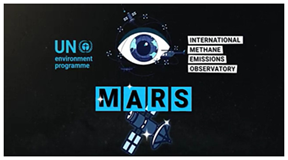

19th November 2022 (7 Topics)
Context
The Global Methane Assessment: 2030 Baseline Report which was launched at the Climate and Clean Air Ministerial Meeting at COP27, highlighted that Methane emissions are going to rise by 5-13% by 2030.
About
Key highlights of the Report:
- The report evaluated the baseline (a scenario of what would happen without efforts) such as the Global Methane Pledge.
|
The Global Methane Pledge was announced last year atCoP26. The goal is to slash global methane emissions by at least 30 percent from 2020 levels by 2030. Achieving the pledge could eliminate over 0.2 degrees Celsius of warming from 2040-2070. |
- This also represents an estimated increase of 20-50 million tonnes of methane per year above current levels.
- Cutting methane emissions in the next decade should complement decarbonization efforts. This is mainly because removing carbon dioxide will also remove cooling aerosols.
- At CoP27, 150 nations joined the pledge, where India and China have not made the commitment yet.
- Around 95 percent of the Nationally Determined Contributions (NDC) now include methane or will include it in revised versions.
- Methane levels in the atmosphere in 2021 reached a record high of 1908 parts per billion. This is 262 percent of the preindustrial era levels, according to the World Meteorological Organization.
- Agriculture, fossil fuels as well as solid waste, and wastewater are the three major sources of methane.
- Human activities release 350-390 million tonnes of methane annually.
- Emissions from the agriculture and fossil fuel energy sectors are around 120-140 million tonnes per year, roughly twice that of the waste sector.
- Emissions are projected to rise by about 11 million tonnes annually by 2030 under a business-as-usual scenario from the agriculture sector.
|
At CoP27, the UN launched the Methane Alert and Response System (MARS) to track methane emissions. It will go live in January 2023. |
|
About Methane:
Sources of Methane:
|
Methane Alert and Response System (MARS):
- MARS is a part of global efforts to slow climate change by tackling global warming gas.
- It will use state-of-the-art satellite data to identify significant emission events, notify relevant stakeholders, and support and track mitigation progress.
- MARS will integrate data from the rapidly expanding system of methane-detecting satellites to include lower-emitting area sources and more frequent detection.
- Data on coal, waste, livestock, and rice will be added gradually to MARS to support the Global Methane Pledge

Steps were taken to Curb Methane Emissions:
- COP 26 Pledges: At COP26 in Glasgow, over 100 countries signed an agreement to cut methane emissions by 30% by 2030.
- The US President has announced the Global Methane Pledge, which is a US-EU-led effort to cut methane emissions by a third by the end of this decade.
- MethaneSAT: Controlling methane emissions will require further scrutiny of its sources. To this end, satellites that will track methane leakage such as MethaneSAT have been planned to launch.
- The International Energy Forum (IEF) launched the IEF Methane Initiative in June 2021 to develop a methane emissions measurement methodology.
More Articles


